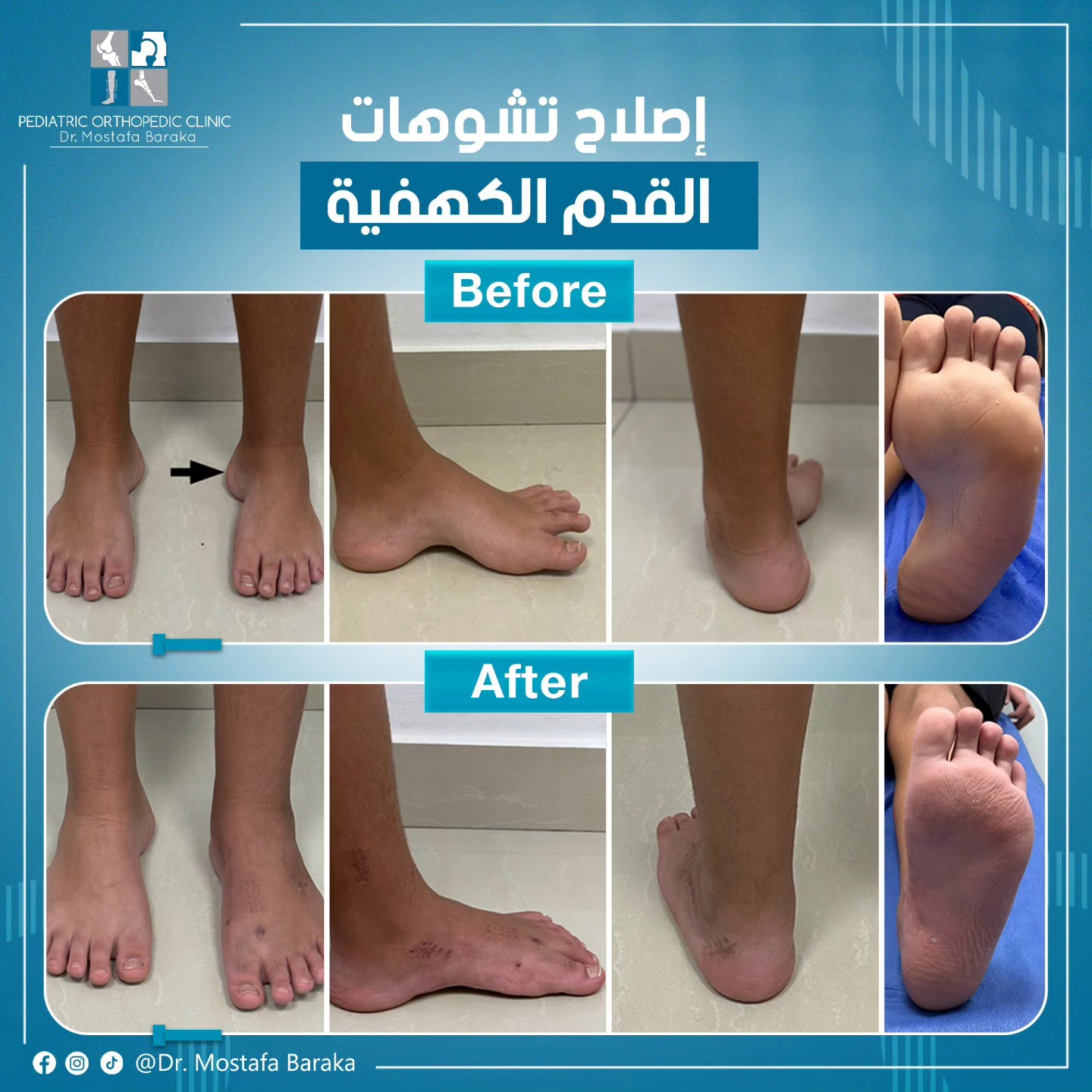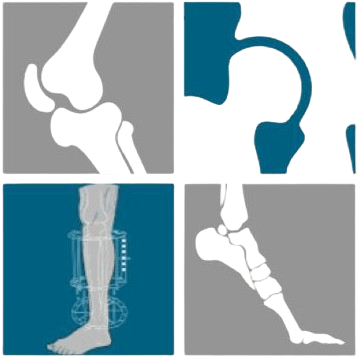- Address
- Call Us +20103281119
- home,email mostafa.baraka@hotmail.com
Repairing cavernous foot deformities

Repairing cavernous foot deformities
Definition of cavernous foot deformities
Cavernous foot deformity is a medical condition that affects the formation of bones and ligaments in the foot, resulting in a change in the shape and function of the foot. This includes curvature of the front toes and contraction of the longitudinal arch. These deformities can cause difficulty walking and persistent foot pain.
Cavernous foot deformities: causes and symptoms
Cavernous foot deformities are a medical condition that arise due to various factors such as genetics and environmental factors. These deformities may lead to pain and cramps in the foot, and a change in the shape of the toes and the longitudinal arch of the foot.
Cavernous foot deformities: diagnosis and treatment
Cavernous foot deformities are diagnosed through medical examination and medical history. It may include direct examination of the foot and x-rays to evaluate the structure of the foot. Cavernous foot deformities are treated with foot orthotics, surgery and physical therapy.
Treatment options for cavernous foot deformities
Treatment options for cavernous foot deformities include foot orthotics, surgical prosthetics, and physical therapy to achieve improved function and pain relief.
Traditional treatment for cavernous foot deformities
Conventional treatments for cavernous foot deformities include the use of low-heeled shoes, bandaging, and application of ice to relieve pain and inflammation. Pain-relieving medications such as non-steroidal painkillers may also be used.
Surgical treatment of cavernous foot deformities
When conventional treatment is ineffective in cases of cavernous foot deformities, doctors may recommend surgical treatment. Surgical treatment involves reshaping the bone to correct deformities and improve foot function.
Restoring the normal function of the cavernous foot
After surgical treatment of cavernous foot deformities is performed, the process of restoring normal function of the foot begins. This includes physical rehabilitation sessions and movement training to enhance strength and balance in the foot. Doctors may also recommend pain-relieving techniques for cavernous malformations to get the most benefit from treatment.
Foot rehabilitation after treatment
After surgical treatment of cavernous foot deformities, foot rehabilitation sessions are performed. This includes exercises to enhance strength and balance, and improve normal foot function and mobility.
Techniques to relieve the pain of cavernous malformations
Pain relief techniques for cavernous foot deformities include applying ice or cold compresses to the affected area and using pain-relieving lotions with natural ingredients such as aloe vera creams and peppermint oil.
Complications and prevention measures
Complications of cavernous foot deformities include increased pain and swelling, which can affect movement and the ability to perform daily activities. It is recommended to follow preventive measures such as wearing appropriate shoes, reducing foot load, and performing muscle-strengthening exercises to prevent deformities.
Complications of cavernous foot deformities
Complications of cavernous foot deformities include increased pain and swelling and impact on movement and ability to perform daily activities. It is recommended to follow preventive measures to avoid these complications and relieve pain.
Measures to prevent and maintain foot health
A number of measures are recommended to prevent and maintain the health of cavernous feet. These measures include maintaining a healthy weight, wearing comfortable, well-fitting shoes, and avoiding high-heeled shoes. Also, you should avoid sitting or standing for long periods, walk properly, and strengthen the foot muscles with appropriate exercises. Finally, you should consult a specialist doctor and receive appropriate treatment to reduce the risk of cavernous malformations.
Self-care and preventive tips
Self-care and preventative tips play an important role in maintaining healthy cavernous feet. It is recommended to organize daily foot care, such as washing it regularly, drying it well, and applying moisturizing cream. It is also preferable to avoid walking barefoot and use means of protection such as half cushions and supported shoes.
Tips for taking care of cavernous feet at home
Tips for taking care of cavernous feet at home include washing the feet regularly, drying them well, and using a moisturizing cream to keep the skin soft. It is also preferable to wear supportive shoes and use half pillows to relieve pressure on the foot.
How to prevent cavernous foot deformities
It is recommended to follow the following tips to prevent cavernous foot deformities:
1. Wear appropriate and supportive shoes.
2. Stay away from wearing high-heeled shoes for long periods.
3. Doing exercises to strengthen the muscles surrounding the foot and ankle.
4. Pay attention to a healthy weight and practice regular physical activity.
5. Avoid spraining the ankle or sustaining severe shocks to the foot.
6. Maintain the flexibility of muscles and ligaments by following daily stretching exercises.
7. Consult a doctor and conduct routine examinations for early detection of any possible foot deformities.
Specialized consultations and final consultations
After completing the examinations and final diagnosis of cavernous foot deformities, the patient is advised to consult with doctors specialized in orthopedic diseases and physical therapy. The final consultation includes the necessary steps for comprehensive treatment with the goal of restoring foot function, reducing pain, and improving quality of life.
Guidance from specialist doctors
The patient is advised to consult with doctors specializing in orthopedic diseases and physical therapy for guidance. They will provide the correct instructions for organizing treatment, achieving healing and restoring the function of the cavernous foot.
Final steps for comprehensive treatment
After medical treatment and physical rehabilitation, final care directions are provided to maintain future foot health and avoid recurrence of cavernous deformities.

